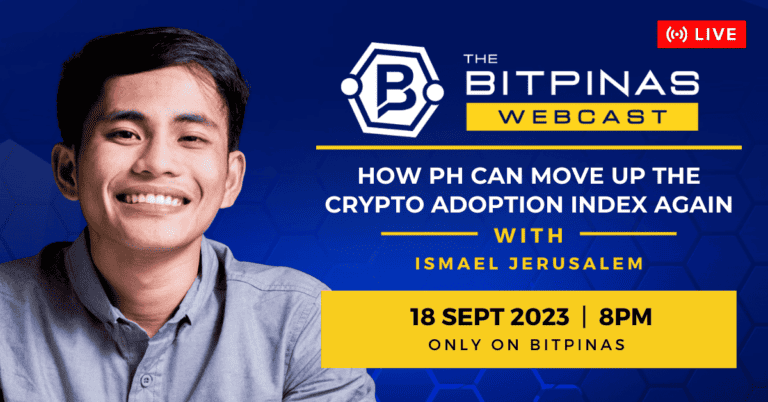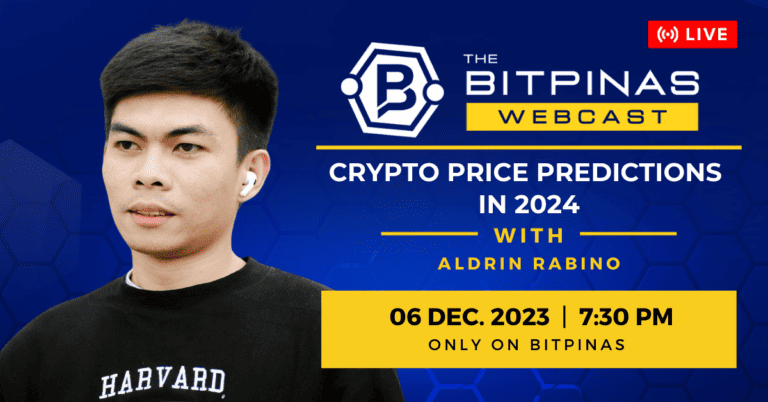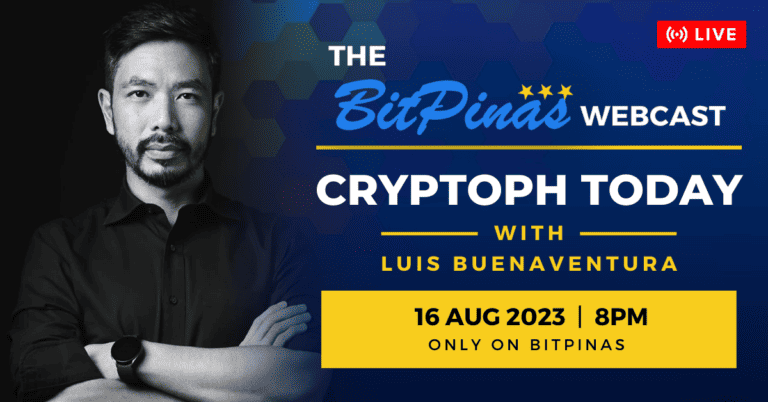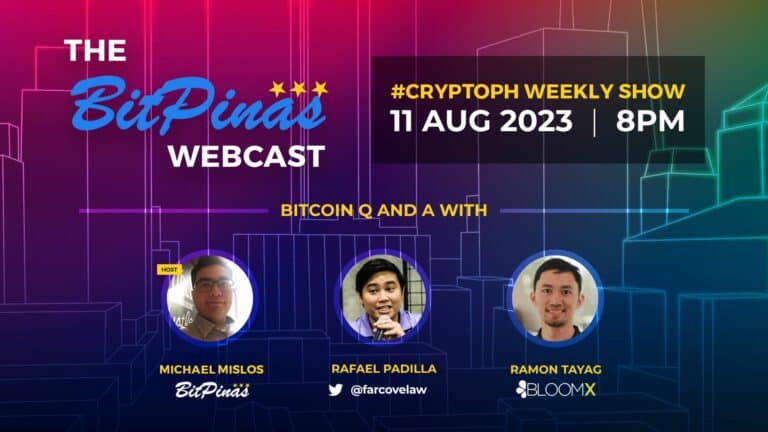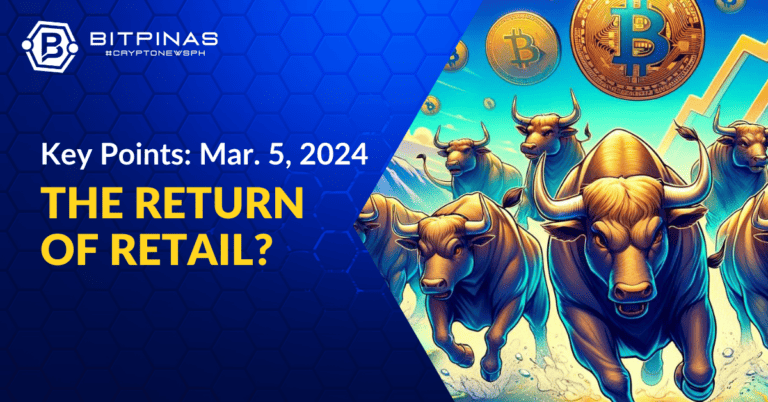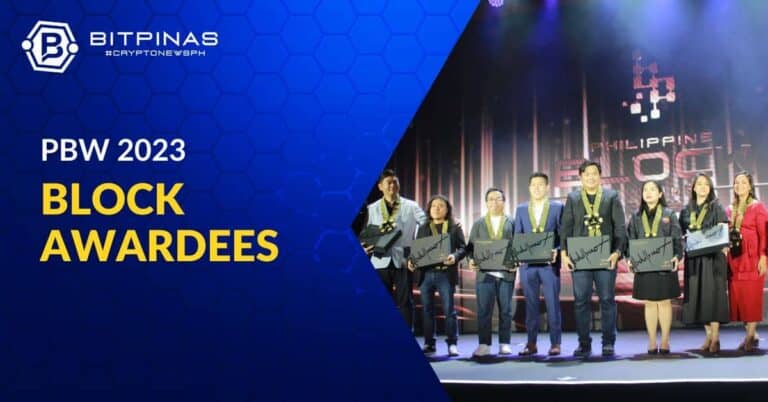From Bitcoin ETF to Halving: Crypto Narratives of 2024
BitPinas kicks of 2024 with a live interview on Bitcoin ETF, halving, and the prevailing crypto narratives of 2024.
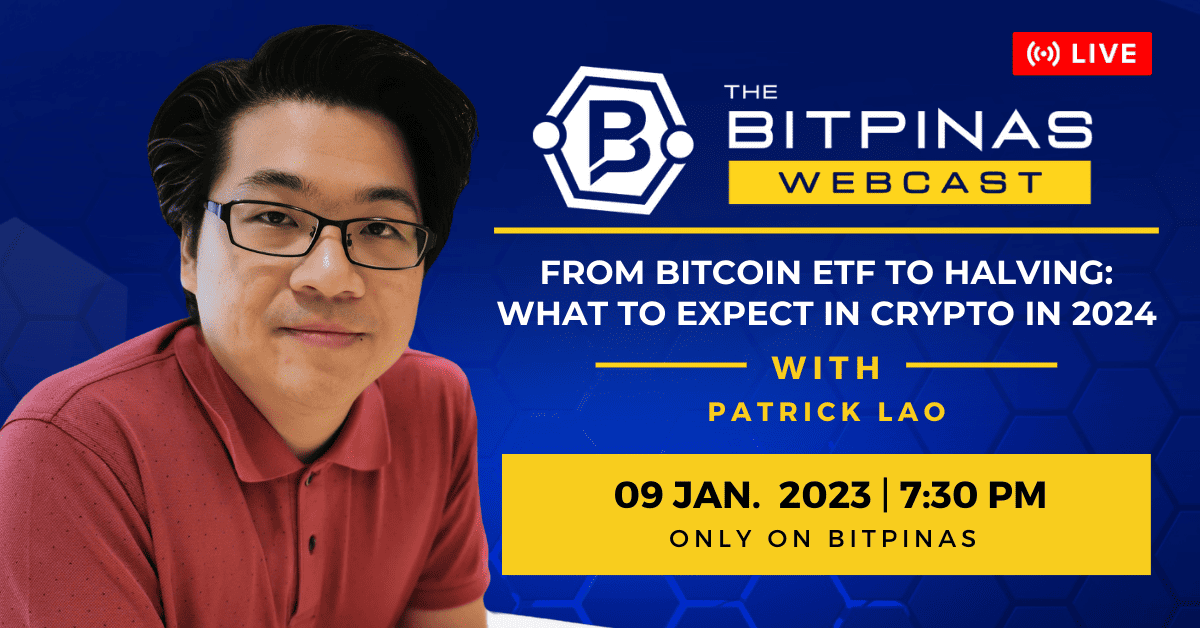
As the crypto industry continues to progress and evolve, with an increasing number of people adopting digital assets, Mintoo Director Patrick Lao shared crypto narratives that investors should watch in 2024.
Lao shared this during the recent BitPinas webcast, “From Bitcoin ETF to Halving: What to Expect in Crypto in 2024” on January 9, 2024.
Table of Contents
Video Interview
Crypto Narratives of 2024
“I believe [that] being a crypto participant; whether you’re interested in the industry, you’re investing, (and/or) you’re a trader, it’s very important to know the narratives because sometimes in bull runs narratives there have a large effect,” Lao stated.
Bitcoin
Lao began his discussion with Bitcoin, noting that the cryptocurrency historically and conventionally leads the bull run.
There are two narratives for Bitcoin in 2024: the approval of Bitcoin Spot exchange-traded funds (ETF) and halving.
On January 11th, the U.S. Securities and Exchange Commission (U.S. SEC) approved the first spot Bitcoin ETFs in the US, including ARK 21Shares, Invesco Galaxy, VanEck, WisdomTree, Fidelity, Valkyrie, BlackRock, Grayscale, Bitwise, Hashdex, and Franklin Templeton. This marks a major shift in the Commission’s approach to cryptocurrency financial products.
On the other hand, the upcoming Bitcoin halving is projected for April 2024 at block height 840,000, reducing the mining reward from 6.25 BTC to 3.125 BTC per block. Historically, Bitcoin halvings have preceded significant price surges. This event lowers the supply of new bitcoins, increasing their buying cost.
BTC to PHP:
Ethereum
Ethereum, the next largest blockchain after Bitcoin, is also rumored to have an ETF launch soon, and Lao noted that industry participants should watch out for this as well.
Last November, BlackRock, a major investment management firm, disclosed plans to launch an Ethereum ETF, as revealed in a Nasdaq filing. The ETF aims to hold Ethereum’s ether, and its filing indicates Coinbase as the custodian of the ETH, with an unnamed third party holding the cash.
However, Lao noted that the current narrative surrounding ETH is quite tricky, as it is not as clear as it was last year. He stated, as a personal opinion, that while Ethereum is a smart contract blockchain that people can do lots of things on, there are now also competitors that are faster and cheaper that are coming to maturity.
Alternative L1s
Alternative Layer 1 blockchains are a category of blockchains that rival Ethereum’s smart contract technology, serving as the foundational layer for cryptocurrency ecosystems and ensuring network security.
These networks serve as the foundational layer for cryptocurrency ecosystems and are vital to the overall security of the network. Some well-known examples of alternative Layer 1 blockchains include Solana, Avalanche, Cardano, Polkadot, Algorand, Near, and Cosmos.
These platforms compete based on scalability, security, and decentralization, which are collectively called the blockchain trilemma. Restaking, on the other, is the process of locking up stake tokens in a blockchain protocol to secure the network and earn rewards.
In the context of blockchain technology, the term “Layer 1” refers to the base layer or main blockchain protocol, which implements fundamental consensus mechanisms and smart contract functionalities.
Alternative DAs
Alternative digital assets are digital representations of value that may be traded, transferred, or used for payment.
These assets are distinct from Bitcoin and traditional fiat currencies. Alternative digital assets include altcoins, tokens, stablecoins, security tokens, and non-fungible tokens (NFTs).
GameFi
Game Finance (GameFi) represents the convergence of blockchain technology, decentralized finance (DeFi), and gaming. It introduced new economic models by leveraging NFTs for in-game assets, allowing players true ownership and the ability to trade or sell virtual items.
GameFi is bolstered by a number of elements that allow it to thrive. The play-to-earn model incentivizes active participation, enabling players to earn cryptocurrency or other valuable rewards.
Moreover, decentralized ownership, governance tokens, liquidity mining, staking mechanisms, and cross-platform interoperability further characterize the GameFi ecosystem, transforming traditional gaming experiences and providing players with a stake in the development and decision-making processes of the games they engage with.
Last November, the homegrown gaming guild, Yield Guild Games (YGG), organized the YGG Web3 Games Summit, which was attended by several gaming and finance personalities and entities.
AI
Artificial Intelligence (AI) in the cryptocurrency sector refers to the application of AI technologies and techniques to various aspects of the cryptocurrency and blockchain space. It is used in the cryptocurrency sector to enhance various aspects of the industry.
These use cases include:
- Algorithmic trading employs AI algorithms for automated and rapid execution based on market analysis.
- AI tools analyze market data to predict trends and assist traders in making informed decisions.
- In terms of security, AI is used for fraud detection and to bolster the overall security of cryptocurrency transactions by identifying unusual patterns.
- Portfolio management tools utilize AI to recommend adjustments based on market conditions and user preferences.
- AI-driven chatbots are deployed in customer support services, providing instant responses to user queries.
- In the realm of smart contracts, AI integration automates and optimizes contract execution, contributing to increased efficiency and reliability.
- KYC and AML compliance benefit from AI tools that verify user identities and detect suspicious transactions.
- AI also plays a role in evaluating tokenomics and ICOs by analyzing factors such as token supply, demand dynamics, and utility.
DePIN
Decentralized Physical Infrastructure (DePIN) is a novel concept in the cryptocurrency industry that is set to fast forward the development and deployment of real-world assets through blockchain technology.
DePIN networks are blockchain-based physical infrastructure networks that leverage tokens to incentivize and reward contributors. These offer a decentralized model that promotes open competition, innovation, and lower costs.
DePIN networks are categorized into logistics, mapping, and telecom.
What are Crypto Narratives?
Crypto narratives are the prevailing storylines, themes, or overarching concepts in the cryptocurrency and blockchain space. It is shaped by collective beliefs, trends, and discussions, these narratives impact market sentiment, investor behavior, and the development of new projects and technologies.
Emerging from a mix of technological capabilities, social and economic events, and individual motivations, these narratives play a crucial role in shaping public perception and market movements.
However, it is essential to critically evaluate these narratives, as they can be misleading or harmful, and base investment decisions on thorough analysis and research.
This article is published on BitPinas: From Bitcoin ETF to Halving: What to Expect in Crypto in 2024
Disclaimer:
- Before investing in any cryptocurrency, it is essential that you carry out your own due diligence and seek appropriate professional advice about your specific position before making any financial decisions.
- BitPinas provides content for informational purposes only and does not constitute investment advice. Your actions are solely your own responsibility. This website is not responsible for any losses you may incur, nor will it claim attribution for your gains.


